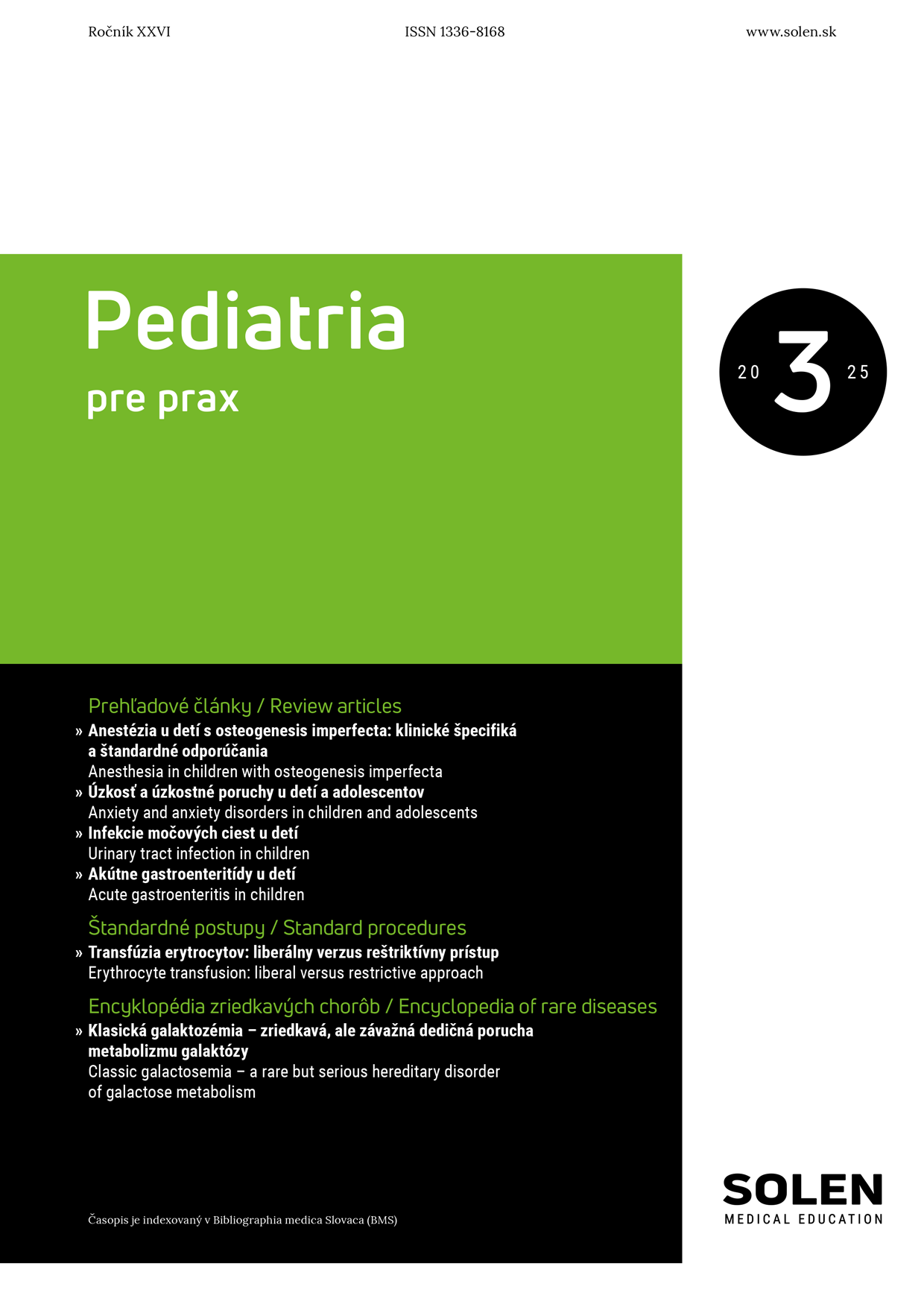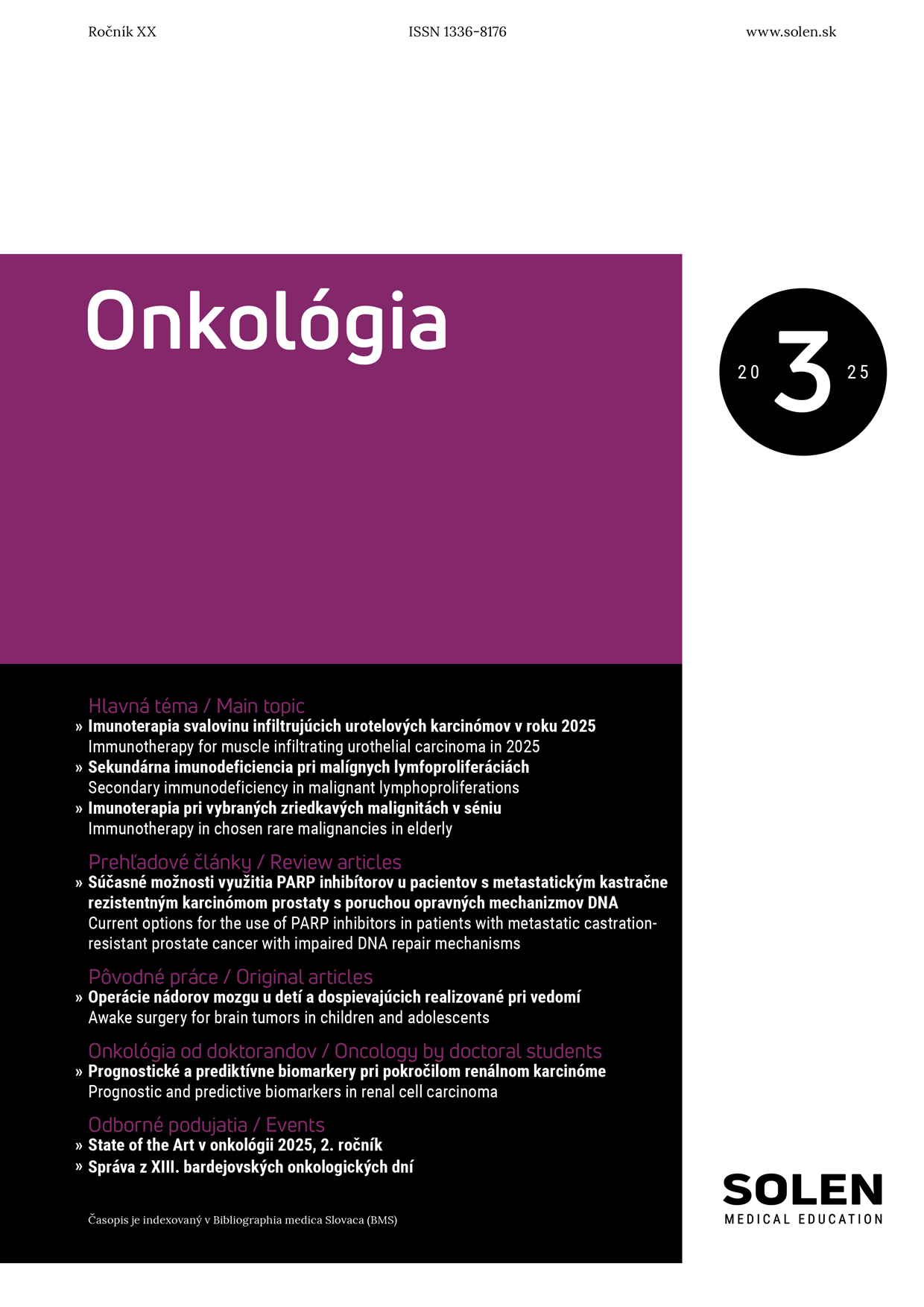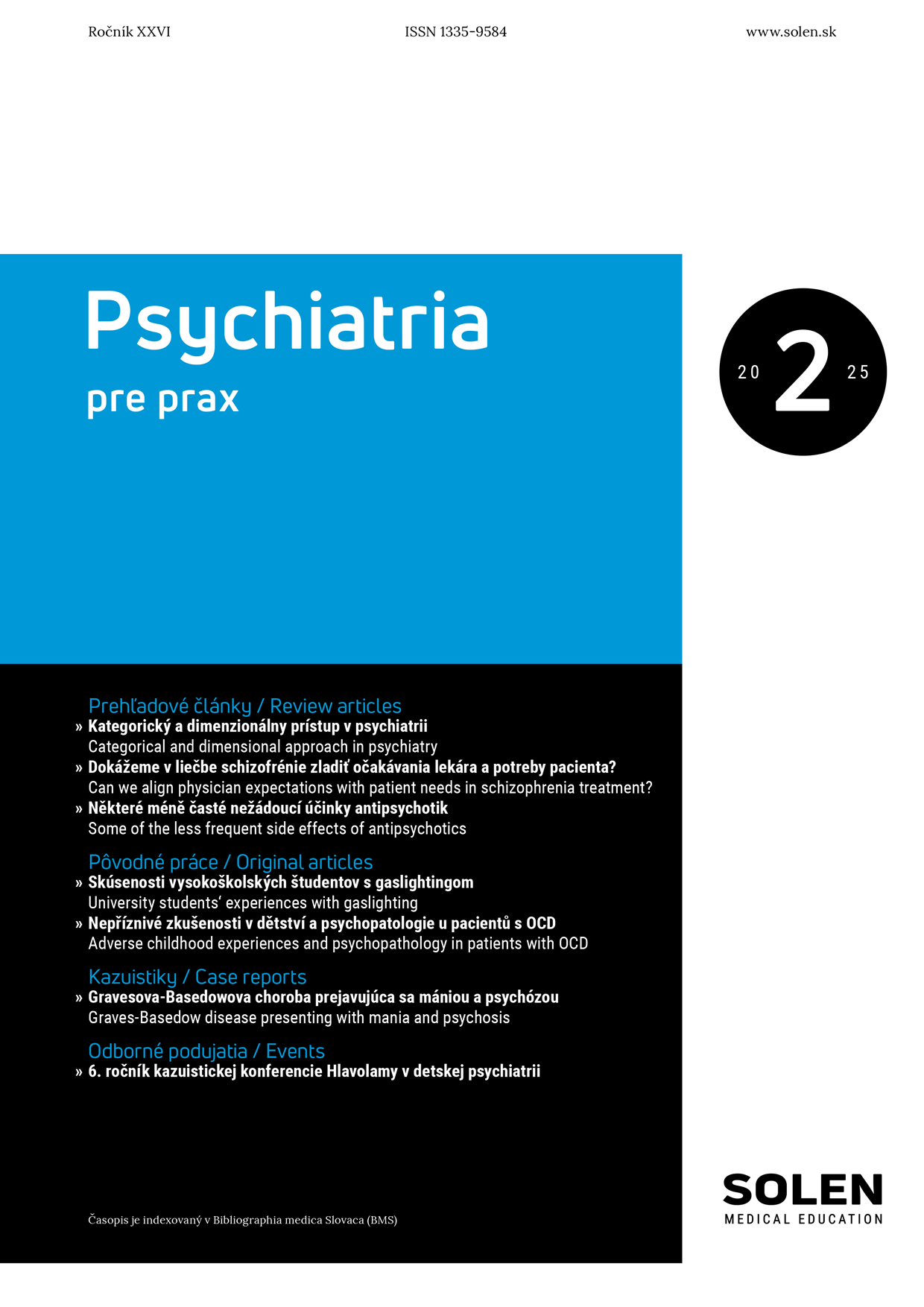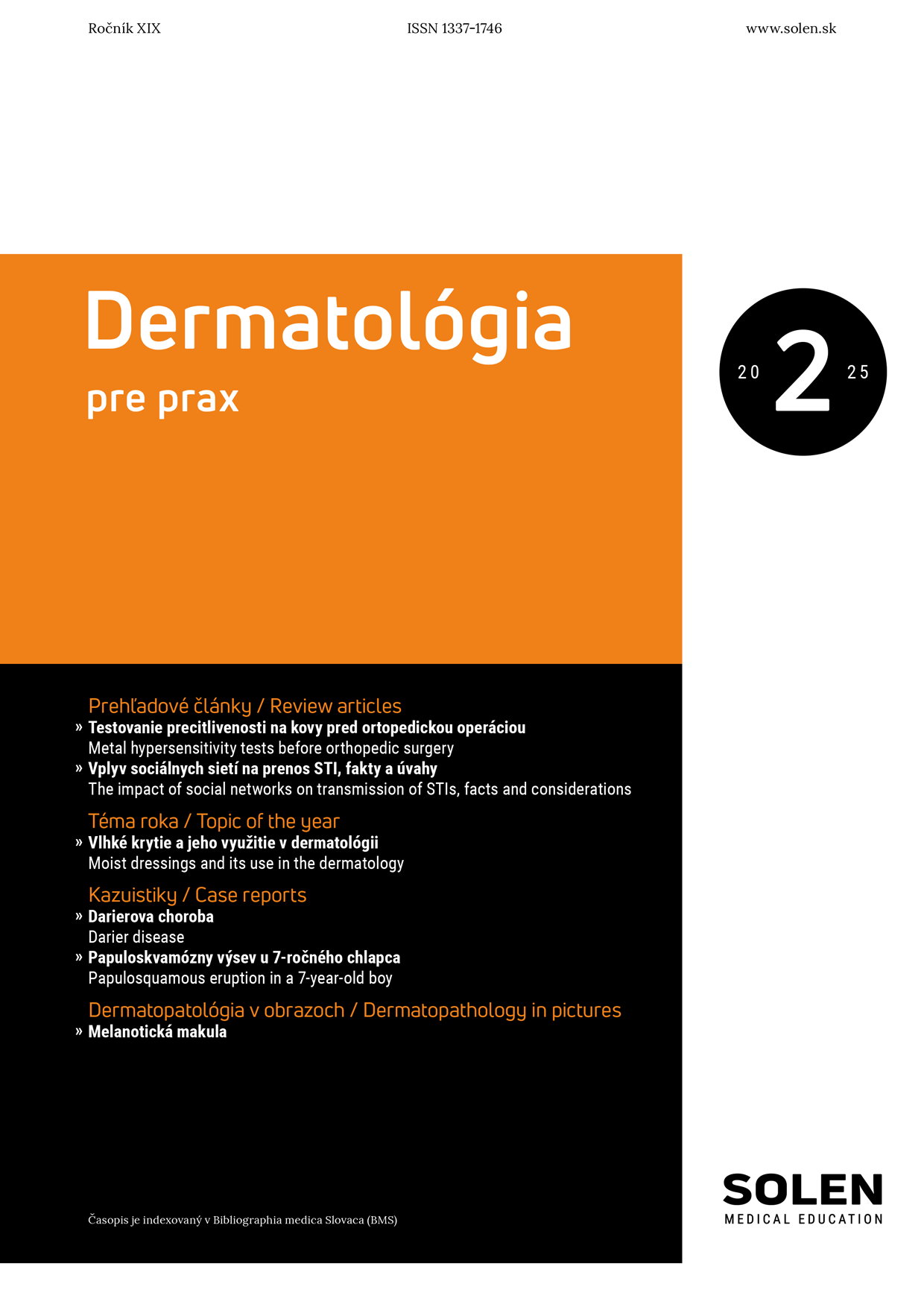Neurológia pre prax 6/2016
Kennedy's disease (bulbar and spinal muscular atrophy)
Bulbar and Spinal Muscular Atrophy (BSMA) is a rare degenerative disease with a slow progression and adult-onset and caused by the expansion of CAG triplets repeat on first exon of the androgen receptor gene of chromosome Xq11–12. Heredity is X-linked recessive and disease developed by male patients. Female are the carriers. The main neurological manifestations is a weakness and atrophy, fasciculation’s of muscles of bulbar (tongue, facial muscles) and limb muscles (more prominent proximally). Other disturbances: gynecomastia, tremor, cramps, slight sensory deficit. The diagnosis is usually established between 40 and 50 years, but the first signs (gynecomastia, weakness, cramps) occur from 30 years. Electromyography shows neurogenic potentials, fasciculation’s. Genetic investigation shows expansion of CAG triplets over 40 repeats. No causal therapy is available. The life expectance is only slightly reduced.
Keywords: Kennedy's disease, bulbar and spinal muscular atrophy, hereditary disease of motor neurone

















